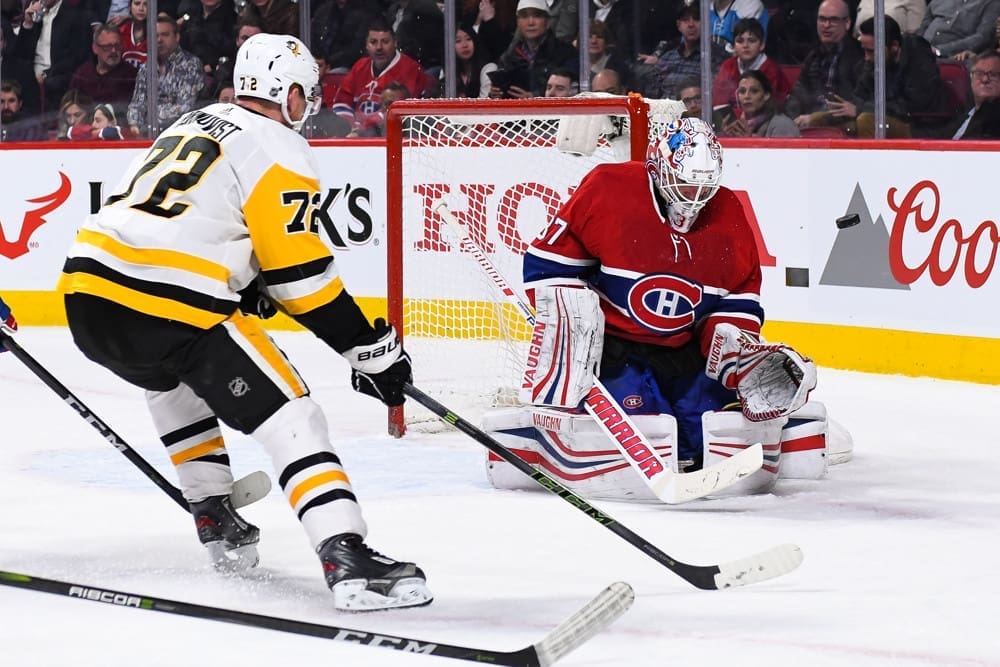Matt-Alytics
Have the Penguins Really Figured Out Back-to-Backs?
The causes are unclear, but those short-rest collapses have been put (mostly) in the past.

Remember the opening week of the season? I know, it was a long time ago, but indulge me.
The Penguins battled the Blues on banner-raising night, losing in overtime at PPG Paints Arena, then got completely stomped by the Blackhawks in Chicago the next night, allowing 10 goals for the first time in more than two decades.
That debacle was simply the start of a trend, as the Penguins ended up losing the second of back-to-back games four straight times to start the season, six straight if we count an overtime loss in Calgary and a shootout defeat in Nashville. Since then, though, the defending champs have gone 8-2 in those challenging situations, leading into this week’s home-road setup with the Islanders and Canadiens.
Back-to-back situations rarely occur in the playoffs, so it’s tempting to write off these results (or least minimize them) when gauging the team’s performance and how it’s trending as the regular season concludes.
On the other hand, it seems there is some merit into seeing how the Penguins have turned around their early-season issues when taking the ice on short rest. At the very least, playing back-to-back situations tests the kind of toughness — both physical and mental — that is crucial to survive in the hunt for the Stanley Cup.
So, let’s break down the results from a few different angles …
Survey Says
First, I looked at simple shot share from the second half of back-to-back situations this season, of which there have been 16. All data was good entering Tuesday’s play.
The Penguins have generated 48.9 percent of the even-strength attempts when playing on zero days’ rest, compared to 53.0 percent in all other games in 2017-18. A 4 percent difference might not sound like much to you, but bear in mind this is a league in which the top and bottom teams in shot share are separated by just about 9 percent.
Next up was even-strength scoring chances, as determined by the good folks at Natural Stat Trick. When the Penguins have played the day before, they have generated 49.8 percent of the chances, as opposed to the 52.3 percent they’ve earned in the other games.
For a better idea of context, the Penguins rank fifth in the NHL in even-strength shot share, but their short-rest results would put them 20th. As for scoring chances, they are ninth overall but would be 18th if they were represented by their short-rest rate.
All Better Now?
To be sure, this data is heavily influenced by the smallish sample size. Two of the Penguins’ early-season failures on short rest occurred against the Lightning. Western Conference contenders Winnipeg and Nashville were mixed in, too. And by the way, all those losses in October and November were on the road.
More recently, the Penguins have faced back-to-backs that have ended with games against also-rans like the Islanders, Rangers and Canadiens. The downgrade in opponent strength could account for the better results in these difficult spots lately.
At the same time, there’s no doubt the Penguins have improved at even strength when faced with a tough schedule in the second half of the season. After getting outshot and out-chanced in seven of their first eight short-rest games, they have owned the shot share and the scoring areas in five of eight since.
If we look at the percentages, the Penguins have increased their short-rest shot rate by more than 5 percent in the second half (46.2 to 51.7 percent) and their chance rate by more than 7 percent (45.9 to 53.4).
This could either be a team playing better overall, or there could be something more to it. More focus and determination in back-to-backs? We don’t know, but those short-rest collapses have been put (mostly) in the past.












